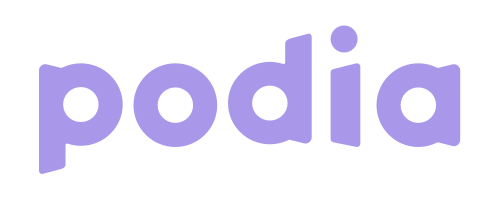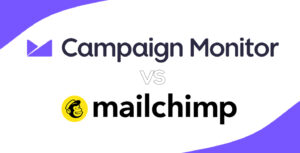When it comes to choosing between Thinkific vs Kajabi the decision can be challenging. This blog post provides an in-depth comparison of Thinkific vs Kajabi, focusing on key aspects such as pricing, ease of use, features, and security. Whether you’re a seasoned educator or just starting in the digital course world, understanding the nuances of these two popular platforms is essential. We’ll guide you through each factor, offering insights to help you make a well-informed choice that suits your specific requirements and goals.
Table of Contents
Quick Comparison: Thinkific vs Kajabi
In a concise comparison of Thinkific vs Kajabi, Thinkific emerges as a user-friendly and budget-friendly option, ideal for beginners or those seeking straightforward course creation and delivery. It offers a free plan, making it accessible for new entrants. On the other hand, Kajabi stands out as an all-in-one solution, integrating advanced course creation with robust marketing and sales tools, albeit at a higher price point and with a steeper learning curve. While Thinkific focuses on simplicity and ease of use, Kajabi appeals to those requiring comprehensive marketing features and an extensive online business toolset.

Photo by Brad Neathery
Pricing Structure: Comparing Costs
When choosing an online course platform, pricing is a crucial factor. In this section, we’ll delve into the pricing structures of Thinkific and Kajabi, focusing on the value they offer for their cost. Thinkific presents a tiered pricing model, starting with a free plan ideal for beginners, and scales up to more feature-rich packages for advanced users and larger organizations. Kajabi, on the other hand, positions itself as a premium, all-inclusive platform with its pricing reflecting the comprehensive suite of tools it offers, including course creation, marketing, and website management, though without a free tier option.
This comparative analysis aims to unravel the details of each platform’s pricing strategy, providing insights into what you get at each pricing level and how these offerings stack up in terms of value for money. Understanding these aspects is key to determining which platform, Thinkific or Kajabi, aligns best with your budgetary constraints and functional needs.
Thinkific Pricing
Thinkific’s pricing structure is designed to cater to a wide range of users, from beginners to large-scale course providers. Starting with a free plan, Thinkific offers an accessible entry point for new educators, allowing them to explore basic course creation features without any financial commitment.
The next tier is the Basic Plan, priced at approximately $49 per month, which unlocks additional functionalities like custom domains and coupon codes, ideal for growing your brand. For more advanced features, the Pro Plan, at around $99 per month, is the most popular choice, offering a suite of tools including memberships, certificates, and enhanced customization options. The top tier, the Premier Plan, is priced at roughly $499 per month and is tailored for large businesses or institutions needing extensive features like multiple instructor profiles, advanced integrations, and comprehensive support. This tiered approach in Thinkific’s pricing ensures flexibility and scalability for various course creation needs.
To learn more about Thinkific Pricing, we recommend that you read this Thinkific Pricing for 2023

Kajabi Pricing
Kajabi’s pricing model reflects its positioning as a comprehensive, all-in-one platform for online course creators and entrepreneurs. The Basic Plan, starting at approximately $149 per month, offers a robust foundation for course creation and marketing, albeit at a higher entry point than some competitors.
For those requiring more advanced features, the Growth Plan is available at around $199 per month, including enhanced automation, analytics, and additional marketing tools, making it suitable for growing businesses. The highest tier, the Pro Plan, is priced at about $399 per month, catering to larger businesses and institutions with its extensive range of features like a code editor, unlimited landing pages, and advanced customization options. Kajabi does not offer a free plan, focusing instead on providing a premium, feature-rich experience for serious online course creators and digital entrepreneurs who need an all-encompassing solution for their online presence.

Comparing Value for Money
Although Kajabi’s pricing is typically higher than Thinkific’s, it justifies this with a comprehensive suite of marketing and automation tools, making it a preferred choice for those seeking an all-in-one platform. Kajabi’s robust functionalities cater to advanced course creators who need integrated marketing capabilities to scale their online presence. Conversely, Thinkific stands out for its affordability, offering a range of options that are particularly appealing to beginners and intermediate course creators.
Thinkific’s plans, while less expensive, still encompass a variety of essential features required for effective course creation and management. Therefore, when comparing Thinkific vs Kajabi, it’s crucial to look beyond mere pricing. The decision should be based on the specific features each platform offers and how they align with your individual needs. The right choice depends on whether you prioritize advanced marketing tools or seek a cost-effective solution with essential course-creation capabilities.
Winner for Pricing: Thinkific
Thinkific offers a more budget-friendly approach, ideal for those just starting out or with limited needs for advanced marketing tools.
Ease of Use: Which One Is Easier To Use?

Photo by Burst
In the vibrant world of online course platforms, the Thinkific vs Kajabi debate often hinges on a crucial aspect: user-friendliness, a key consideration for both novices and experienced course creators. Thinkific earns accolades for its simplicity and intuitive design, making it the go-to choice for online education newcomers.
Its user-friendly dashboard, effortless navigation, and streamlined course builder empower users to swiftly launch courses, sidestepping the often-daunting technical hurdles of digital education. In contrast, Kajabi emerges as a feature-rich bastion, tailored for those desiring a comprehensive platform that melds course creation with sophisticated marketing and sales tools.
While Kajabi stands as a formidable ally for seasoned creators eyeing a more cohesive online ecosystem, its complexity can intimidate beginners. Nevertheless, Kajabi balances this with extensive support, including tutorials and community forums, easing the learning journey. Ultimately, Thinkific shines for its beginner-friendly ease, whereas Kajabi attracts those seeking a potent, all-encompassing platform, demanding more time to master but offering greater depth.
Highlights: Thinkific
- Dashboard: Thinkific’s dashboard is clean and straightforward, guiding users through course creation step by step.
- Course Builder: The platform offers a drag-and-drop course builder, simplifying the process of creating and organizing course content.
- Templates: For those who prefer a quick start, Thinkific provides pre-designed templates that are both attractive and easy to customize.
Highlights: Kajabi
- All-In-One Platform: Kajabi combines course creation with marketing and sales tools. This comprehensive approach is efficient but can be overwhelming for first-time users.
- Customization Options: Kajabi offers extensive customization options for courses and websites, which is great for advanced users but might be complex for beginners.
- Help and Support: Kajabi provides detailed tutorials and customer support to help users navigate its extensive features.
Winner for Ease of use: Thinkific
- Thinkific shines in simplicity and ease of navigation, making it ideal for those who are new to online course creation or prefer a more straightforward approach.
Features: Which Has Better Features?

Photo by Campaign Creators
In the Thinkific vs Kajabi comparison, understanding each platform’s features is essential to discern which best aligns with your needs. Thinkific excels with its user-friendly course creation and management tools, making it a go-to for those prioritizing ease of use and straightforward course setups.
It offers a range of customizable templates, intuitive content uploading, and efficient student management features, suitable for beginners and intermediate creators. Kajabi, on the other hand, positions itself as a more comprehensive solution, integrating robust marketing and automation tools with course creation. Its features extend beyond course delivery to include email marketing, sales funnels, and advanced analytics, ideal for creators looking to build a full-fledged online business. While Thinkific is more focused on the educational aspects, Kajabi provides an all-in-one platform for those who need extensive marketing tools along with course creation. This makes Kajabi a better fit for users who are willing to navigate a slightly more complex interface in exchange for a broader range of functionalities.
Thinkific Features
- Course Building: Offers a versatile course builder with quiz and survey capabilities, video hosting, and rich content options like PDFs and presentations.
- Customization: Allows for significant customization of course pages and student interfaces without needing coding skills.
- Integrations: Supports a variety of integrations with tools like Mailchimp, Google Analytics, and Zapier to enhance course management and marketing.
- Student Engagement: Includes features like discussion forums, certificates of completion, and email communication to keep students engaged.
Kajabi Features
- Course Creation and Marketing: Offers advanced course creation tools along with powerful marketing and sales features like email marketing, pipelines, and automated funnels.
- Website Builder: Includes a comprehensive website builder with blogging capabilities, which is ideal for those looking to build a full online presence.
- Advanced Automation: Features robust automation tools that can trigger actions based on user behavior, enhancing the user experience and marketing effectiveness.
- Membership Sites and Community Building: Provides tools to create membership sites and community forums, fostering a sense of community among users.
Winner for Features: Kajabi
- Kajabi goes a step further by integrating advanced marketing tools and automation, making it a one-stop solution for those who want to manage everything from course creation to sales and community building under one roof.
Pros & Cons: Thinkific vs Kajabi

Photo by Ahmed Zayan
In the debate of Kajabi vs Thinkific for online course platforms, evaluating the pros and cons of each is crucial for an informed decision. Thinkific’s advantages lie in its user-friendly interface and affordability, making it a preferred choice for beginners and those with budget constraints. It offers a free starting plan, easy course creation, and sufficient features for basic course management.
However, Thinkific’s drawbacks include limited marketing tools and fewer automation options, which may not suffice for advanced users. On the flip side, Kajabi excels with its comprehensive, all-in-one platform, providing extensive marketing and automation tools ideal for users looking to not just create but also market their courses effectively. Its cons, however, are the higher cost and absence of a free plan, along with a steeper learning curve due to its advanced features.
Thinkific Pros
- User-Friendly Interface: Thinkific is known for its intuitive and straightforward user interface, making it ideal for beginners.
- Customization Options: Offers a high level of customization for course design without requiring coding skills.
- Free Plan Available: Thinkific provides a free plan, which is excellent for those starting out or with a limited budget.
- No Transaction Fees: On paid plans, Thinkific does not charge any transaction fees, allowing course creators to keep more of their earnings.
Thinkific Cons
- Limited Marketing Tools: Compared to Kajabi, Thinkific lacks advanced marketing and sales tools.
- Fewer Automation Options: There are fewer automation features for student engagement and course marketing.
- Basic Analytics: The analytics tools are somewhat basic, especially in comparison to Kajabi’s advanced reporting features.
Kajabi Pros
- All-In-One Platform: Kajabi offers a comprehensive solution, combining course creation with advanced marketing, sales tools, and website building.
- Robust Marketing Features: Includes powerful tools for email marketing, funnels, and automation.
- Strong Community Features: Excellent for building membership sites and communities around your courses.
- Advanced Analytics: Provides detailed insights into student behavior and course performance.
Kajabi Cons
- Higher Cost: Kajabi’s plans are generally more expensive, which might be a barrier for new or budget-conscious creators.
- Steeper Learning Curve: The wide range of features can be overwhelming, especially for beginners.
- No Free Plan: Unlike Thinkific, Kajabi does not offer a free tier, which can be a drawback for those wanting to try the platform without financial commitment.
Winner for Pro & Cons: Draw
In the comparison of Thinkific vs Kajabi, both platforms have their strengths and weaknesses. Thinkific stands out for its ease of use and budget-friendly options, while Kajabi excels in its comprehensive features and advanced marketing tools. Your choice will depend on your specific needs, expertise level, and budget.
Alternatives

Photo by Headway
While Thinkific and Kajabi are popular choices in the online course platform market, it’s important to consider other alternatives. This section explores some key alternatives to Thinkific and Kajabi, offering a broader perspective for those researching the best platform for their needs.
Teachable
- Overview: Teachable is another strong competitor in the online course platform space, known for its ease of use and robust feature set.
- Pros: User-friendly interface, flexible pricing options, and comprehensive tools for course creation and marketing.
- Cons: Transaction fees on lower plans and fewer built-in marketing tools compared to Kajabi.
Podia
- Overview: Podia is an all-in-one platform that supports not just course creation but also digital downloads, memberships, and email marketing.
- Pros: No transaction fees, strong community-building tools, and an integrated platform for selling a variety of digital products.
- Cons: Limited customization options and fewer third-party integrations compared to Thinkific and Kajabi.
Udemy
- Overview: Udemy is a massive open online course (MOOC) provider offering a wide range of courses. Unlike Thinkific and Kajabi, Udemy is a marketplace where instructors can list their courses.
- Pros: Large audience reach, no upfront costs for course creation, and a wide variety of courses.
- Cons: Less control over pricing and branding, significant competition, and lower revenue share.
Security and Reliability

Photo by Franck
In the digital realm, particularly in online education, the significance of security and reliability cannot be overstated. A critical comparison of Thinkific vs Kajabi in these areas is essential for making a well-informed choice. Thinkific prides itself on robust security measures, including secure cloud hosting to ensure high availability and data protection compliant with global standards like GDPR.
It also implements SSL certificates across all sites, safeguarding data transmission. Regular backups further reinforce data integrity. Kajabi, in parallel, offers a secure and reliable platform with a strong hosting infrastructure, ensuring excellent uptime and performance. It emphasizes data encryption and adheres to stringent privacy regulations to protect user information. Like Thinkific, Kajabi conducts regular data backups and employs continuous monitoring to promptly address potential security issues. Both platforms demonstrate a commitment to customer support, providing resources to handle technical or security concerns.
In choosing between Thinkific and Kajabi, understanding their approaches to security and reliability is crucial, as it not only affects data protection but also influences the overall trust and dependability of the platform for course creators and learners alike.
Thinkific: Security Features
- Secure Hosting: Thinkific courses are hosted on secure, cloud-based servers, ensuring high uptime and reliable access.
- Data Protection: Adheres to GDPR and other international data protection regulations, safeguarding both course creator and student information.
- SSL Certificates: All Thinkific sites come with SSL certificates, encrypting data and providing a secure connection for users.
- Regular Backups: The platform performs regular backups, ensuring that course content and user data are not lost in case of any technical issues.
Kajabi: Security Measures
- Robust Hosting: Kajabi provides reliable cloud hosting, offering excellent uptime rates and consistent performance.
- Data Encryption: Employs strong encryption methods to protect sensitive data and transactions.
- Compliance with Standards: Like Thinkific, Kajabi adheres to GDPR and other privacy standards, ensuring user data is handled responsibly.
- Automated Backups: Regular automated backups are done to prevent data loss and maintain continuity.
Reliability Comparison
- High Uptime Guarantees: Ensuring that courses are accessible to students at all times.
- Continuous Monitoring: Both platforms have systems in place for continuous monitoring of their infrastructure to promptly address any issues.
- Customer Support: Strong customer support teams are available to assist with any technical or security concerns.
Conclusion: Thinkific vs Kajabi: Who is the Winner?
When deliberating on the winner in the Thinkific vs Kajabi showdown, it’s crucial to understand that the victor is not a one-size-fits-all answer, but rather depends on the specific needs and goals of the user.
Thinkific has often crowned the champion for those who prioritize a straightforward, user-friendly interface and cost-effectiveness. Its tiered pricing structure, including a free starting plan, makes it an attractive choice for beginners or those on a tight budget. It focuses on providing the essentials for course creation and delivery, making it ideal for educators who want to craft engaging content without the complexity of extensive marketing tools.
Kajabi, on the other hand, takes the throne for users seeking a more comprehensive, all-in-one solution. Despite its higher price point, it offers a robust suite of advanced marketing and automation tools, seamlessly integrated with the course creation platform. This makes Kajabi a preferable option for individuals or businesses aiming to manage all aspects of their online course business, including marketing and sales, from a single platform.
Both platforms excel in terms of security and reliability, ensuring user data is protected.
Ultimately, the “Winner” is subjective and depends on your unique needs:
- For simplicity and affordability: Thinkific is the winner.
- For a feature-rich platform offering extensive marketing tools and an all-in-one solution: Kajabi comes out on top.
both platforms have their strengths, and the best choice varies based on individual requirements and the scale of your online education endeavors. This decision is less about finding the universally “best” platform and more about identifying which platform aligns best with your specific objectives in the world of online education.







